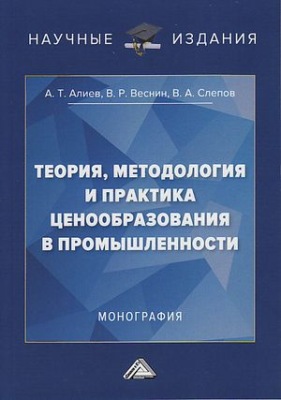Kitobni o'qish: «Great Astronomers»
PREFACE
It has been my object in these pages to present the life of each astronomer in such detail as to enable the reader to realise in some degree the man's character and surroundings; and I have endeavoured to indicate as clearly as circumstances would permit the main features of the discoveries by which he has become known.
There are many types of astronomers—from the stargazer who merely watches the heavens, to the abstract mathematician who merely works at his desk; it has, consequently, been necessary in the case of some lives to adopt a very different treatment from that which seemed suitable for others.
While the work was in progress, some of the sketches appeared in "Good Words." The chapter on Brinkley has been chiefly derived from an article on the "History of Dunsink Observatory," which was published on the occasion of the tercentenary celebration of the University of Dublin in 1892, and the life of Sir William Rowan Hamilton is taken, with a few alterations and omissions, from an article contributed to the "Quarterly Review" on Graves' life of the great mathematician. The remaining chapters now appear for the first time. For many of the facts contained in the sketch of the late Professor Adams, I am indebted to the obituary notice written by my friend Dr. J. W. L. Glaisher, for the Royal Astronomical Society; while with regard to the late Sir George Airy, I have a similar acknowledgment to make to Professor H. H. Turner. To my friend Dr. Arthur A. Rambaut I owe my hearty thanks for his kindness in aiding me in the revision of the work.
R.S.B.
The Observatory, Cambridge.
October, 1895
INTRODUCTION
Of all the natural sciences there is not one which offers such sublime objects to the attention of the inquirer as does the science of astronomy. From the earliest ages the study of the stars has exercised the same fascination as it possesses at the present day. Among the most primitive peoples, the movements of the sun, the moon, and the stars commanded attention from their supposed influence on human affairs.
The practical utilities of astronomy were also obvious in primeval times. Maxims of extreme antiquity show how the avocations of the husbandman are to be guided by the movements of the heavenly bodies. The positions of the stars indicated the time to plough, and the time to sow. To the mariner who was seeking a way across the trackless ocean, the heavenly bodies offered the only reliable marks by which his path could be guided. There was, accordingly, a stimulus both from intellectual curiosity and from practical necessity to follow the movements of the stars. Thus began a search for the causes of the ever-varying phenomena which the heavens display.
Many of the earliest discoveries are indeed prehistoric. The great diurnal movement of the heavens, and the annual revolution of the sun, seem to have been known in times far more ancient than those to which any human monuments can be referred. The acuteness of the early observers enabled them to single out the more important of the wanderers which we now call planets. They saw that the star-like objects, Jupiter, Saturn, and Mars, with the more conspicuous Venus, constituted a class of bodies wholly distinct from the fixed stars among which their movements lay, and to which they bear such a superficial resemblance. But the penetration of the early astronomers went even further, for they recognized that Mercury also belongs to the same group, though this particular object is seen so rarely. It would seem that eclipses and other phenomena were observed at Babylon from a very remote period, while the most ancient records of celestial observations that we possess are to be found in the Chinese annals.
The study of astronomy, in the sense in which we understand the word, may be said to have commenced under the reign of the Ptolemies at Alexandria. The most famous name in the science of this period is that of Hipparchus who lived and worked at Rhodes about the year 160BC. It was his splendid investigations that first wrought the observed facts into a coherent branch of knowledge. He recognized the primary obligation which lies on the student of the heavens to compile as complete an inventory as possible of the objects which are there to be found. Hipparchus accordingly commenced by undertaking, on a small scale, a task exactly similar to that on which modern astronomers, with all available appliances of meridian circles, and photographic telescopes, are constantly engaged at the present day. He compiled a catalogue of the principal fixed stars, which is of special value to astronomers, as being the earliest work of its kind which has been handed down. He also studied the movements of the sun and the moon, and framed theories to account for the incessant changes which he saw in progress. He found a much more difficult problem in his attempt to interpret satisfactorily the complicated movements of the planets. With the view of constructing a theory which should give some coherent account of the subject, he made many observations of the places of these wandering stars. How great were the advances which Hipparchus accomplished may be appreciated if we reflect that, as a preliminary task to his more purely astronomical labours, he had to invent that branch of mathematical science by which alone the problems he proposed could be solved. It was for this purpose that he devised the indispensable method of calculation which we now know so well as trigonometry. Without the aid rendered by this beautiful art it would have been impossible for any really important advance in astronomical calculation to have been effected.
But the discovery which shows, beyond all others, that Hipparchus possessed one of the master-minds of all time was the detection of that remarkable celestial movement known as the precession of the equinoxes. The inquiry which conducted to this discovery involved a most profound investigation, especially when it is remembered that in the days of Hipparchus the means of observation of the heavenly bodies were only of the rudest description, and the available observations of earlier dates were extremely scanty. We can but look with astonishment on the genius of the man who, in spite of such difficulties, was able to detect such a phenomenon as the precession, and to exhibit its actual magnitude. I shall endeavour to explain the nature of this singular celestial movement, for it may be said to offer the first instance in the history of science in which we find that combination of accurate observation with skilful interpretation, of which, in the subsequent development of astronomy, we have so many splendid examples.
The word equinox implies the condition that the night is equal to the day. To a resident on the equator the night is no doubt equal to the day at all times in the year, but to one who lives on any other part of the earth, in either hemisphere, the night and the day are not generally equal. There is, however, one occasion in spring, and another in autumn, on which the day and the night are each twelve hours at all places on the earth. When the night and day are equal in spring, the point which the sun occupies on the heavens is termed the vernal equinox. There is similarly another point in which the sun is situated at the time of the autumnal equinox. In any investigation of the celestial movements the positions of these two equinoxes on the heavens are of primary importance, and Hipparchus, with the instinct of genius, perceived their significance, and commenced to study them. It will be understood that we can always define the position of a point on the sky with reference to the surrounding stars. No doubt we do not see the stars near the sun when the sun is shining, but they are there nevertheless. The ingenuity of Hipparchus enabled him to determine the positions of each of the two equinoxes relatively to the stars which lie in its immediate vicinity. After examination of the celestial places of these points at different periods, he was led to the conclusion that each equinox was moving relatively to the stars, though that movement was so slow that twenty five thousand years would necessarily elapse before a complete circuit of the heavens was accomplished. Hipparchus traced out this phenomenon, and established it on an impregnable basis, so that all astronomers have ever since recognised the precession of the equinoxes as one of the fundamental facts of astronomy. Not until nearly two thousand years after Hipparchus had made this splendid discovery was the explanation of its cause given by Newton.
From the days of Hipparchus down to the present hour the science of astronomy has steadily grown. One great observer after another has appeared from time to time, to reveal some new phenomenon with regard to the celestial bodies or their movements, while from time to time one commanding intellect after another has arisen to explain the true import of the facts of observations. The history of astronomy thus becomes inseparable from the history of the great men to whose labours its development is due.
In the ensuing chapters we have endeavoured to sketch the lives and the work of the great philosophers, by whose labours the science of astronomy has been created. We shall commence with Ptolemy, who, after the foundations of the science had been laid by Hipparchus, gave to astronomy the form in which it was taught throughout the Middle Ages. We shall next see the mighty revolution in our conceptions of the universe which are associated with the name of Copernicus. We then pass to those periods illumined by the genius of Galileo and Newton, and afterwards we shall trace the careers of other more recent discoverers, by whose industry and genius the boundaries of human knowledge have been so greatly extended. Our history will be brought down late enough to include some of the illustrious astronomers who laboured in the generation which has just passed away.
PTOLEMY

PTOLEMY.
The career of the famous man whose name stands at the head of this chapter is one of the most remarkable in the history of human learning. There may have been other discoverers who have done more for science than ever Ptolemy accomplished, but there never has been any other discoverer whose authority on the subject of the movements of the heavenly bodies has held sway over the minds of men for so long a period as the fourteen centuries during which his opinions reigned supreme. The doctrines he laid down in his famous book, "The Almagest," prevailed throughout those ages. No substantial addition was made in all that time to the undoubted truths which this work contained. No important correction was made of the serious errors with which Ptolemy's theories were contaminated. The authority of Ptolemy as to all things in the heavens, and as to a good many things on the earth (for the same illustrious man was also a diligent geographer), was invariably final.
Though every child may now know more of the actual truths of the celestial motions than ever Ptolemy knew, yet the fact that his work exercised such an astonishing effect on the human intellect for some sixty generations, shows that it must have been an extraordinary production. We must look into the career of this wonderful man to discover wherein lay the secret of that marvellous success which made him the unchallenged instructor of the human race for such a protracted period.
Unfortunately, we know very little as to the personal history of Ptolemy. He was a native of Egypt, and though it has been sometimes conjectured that he belonged to the royal families of the same name, yet there is nothing to support such a belief. The name, Ptolemy, appears to have been a common one in Egypt in those days. The time at which he lived is fixed by the fact that his first recorded observation was made in 127 AD, and his last in 151 AD. When we add that he seems to have lived in or near Alexandria, or to use his own words, "on the parallel of Alexandria," we have said everything that can be said so far as his individuality is concerned.
Ptolemy is, without doubt, the greatest figure in ancient astronomy. He gathered up the wisdom of the philosophers who had preceded him. He incorporated this with the results of his own observations, and illumined it with his theories. His speculations, even when they were, as we now know, quite erroneous, had such an astonishing verisimilitude to the actual facts of nature that they commanded universal assent. Even in these modern days we not unfrequently find lovers of paradox who maintain that Ptolemy's doctrines not only seem true, but actually are true.
In the absence of any accurate knowledge of the science of mechanics, philosophers in early times were forced to fall back on certain principles of more or less validity, which they derived from their imagination as to what the natural fitness of things ought to be. There was no geometrical figure so simple and so symmetrical as a circle, and as it was apparent that the heavenly bodies pursued tracks which were not straight lines, the conclusion obviously followed that their movements ought to be circular. There was no argument in favour of this notion, other than the merely imaginary reflection that circular movement, and circular movement alone, was "perfect," whatever "perfect" may have meant. It was further believed to be impossible that the heavenly bodies could have any other movements save those which were perfect. Assuming this, it followed, in Ptolemy's opinion, and in that of those who came after him for fourteen centuries, that all the tracks of the heavenly bodies were in some way or other to be reduced to circles.
Ptolemy succeeded in devising a scheme by which the apparent changes that take place in the heavens could, so far as he knew them, be explained by certain combinations of circular movement. This seemed to reconcile so completely the scheme of things celestial with the geometrical instincts which pointed to the circle as the type of perfect movement, that we can hardly wonder Ptolemy's theory met with the astonishing success that attended it. We shall, therefore, set forth with sufficient detail the various steps of this famous doctrine.
Ptolemy commences with laying down the undoubted truth that the shape of the earth is globular. The proofs which he gives of this fundamental fact are quite satisfactory; they are indeed the same proofs as we give today. There is, first of all, the well-known circumstance of which our books on geography remind us, that when an object is viewed at a distance across the sea, the lower part of the object appears cut off by the interposing curved mass of water.
The sagacity of Ptolemy enabled him to adduce another argument, which, though not quite so obvious as that just mentioned, demonstrates the curvature of the earth in a very impressive manner to anyone who will take the trouble to understand it. Ptolemy mentions that travellers who went to the south reported, that, as they did so, the appearance of the heavens at night underwent a gradual change. Stars that they were familiar with in the northern skies gradually sank lower in the heavens. The constellation of the Great Bear, which in our skies never sets during its revolution round the pole, did set and rise when a sufficient southern latitude had been attained. On the other hand, constellations new to the inhabitants of northern climes were seen to rise above the southern horizon. These circumstances would be quite incompatible with the supposition that the earth was a flat surface. Had this been so, a little reflection will show that no such changes in the apparent movements of the stars would be the consequence of a voyage to the south. Ptolemy set forth with much insight the significance of this reasoning, and even now, with the resources of modern discoveries to help us, we can hardly improve upon his arguments.
Ptolemy, like a true philosopher disclosing a new truth to the world, illustrated and enforced his subject by a variety of happy demonstrations. I must add one of them, not only on account of its striking nature, but also because it exemplifies Ptolemy's acuteness. If the earth were flat, said this ingenious reasoner, sunset must necessarily take place at the same instant, no matter in what country the observer may happen to be placed. Ptolemy, however, proved that the time of sunset did vary greatly as the observer's longitude was altered. To us, of course, this is quite obvious; everybody knows that the hour of sunset may have been reached in Great Britain while it is still noon on the western coast of America. Ptolemy had, however, few of those sources of knowledge which are now accessible. How was he to show that the sun actually did set earlier at Alexandria than it would in a city which lay a hundred miles to the west? There was no telegraph wire by which astronomers at the two Places could communicate. There was no chronometer or watch which could be transported from place to place; there was not any other reliable contrivance for the keeping of time. Ptolemy's ingenuity, however, pointed out a thoroughly satisfactory method by which the times of sunset at two places could be compared. He was acquainted with the fact, which must indeed have been known from the very earliest times, that the illumination of the moon is derived entirely from the sun. He knew that an eclipse of the moon was due to the interposition of the earth which cuts off the light of the sun. It was, therefore, plain that an eclipse of the moon must be a phenomenon which would begin at the same instant from whatever part of the earth the moon could be seen at the time. Ptolemy, therefore, brought together from various quarters the local times at which different observers had recorded the beginning of a lunar eclipse. He found that the observers to the west made the time earlier and earlier the further away their stations were from Alexandria. On the other hand, the eastern observers set down the hour as later than that at which the phenomenon appeared at Alexandria. As these observers all recorded something which indeed appeared to them simultaneously, the only interpretation was, that the more easterly a place the later its time. Suppose there were a number of observers along a parallel of latitude, and each noted the hour of sunset to be six o'clock, then, since the eastern times are earlier than western times, 6 p.m. at one station A will correspond to 5 p.m. at a station B sufficiently to the west. If, therefore, it is sunset to the observer at A, the hour of sunset will not yet be reached for the observer at B. This proves conclusively that the time of sunset is not the same all over the earth. We have, however, already seen that the apparent time of sunset would be the same from all stations if the earth were flat. When Ptolemy, therefore, demonstrated that the time of sunset was not the same at various places, he showed conclusively that the earth was not flat.
As the same arguments applied to all parts of the earth where Ptolemy had either been himself, or from which he could gain the necessary information, it followed that the earth, instead of being the flat plain, girdled with an illimitable ocean, as was generally supposed, must be in reality globular. This led at once to a startling consequence. It was obvious that there could be no supports of any kind by which this globe was sustained; it therefore followed that the mighty object must be simply poised in space. This is indeed an astonishing doctrine to anyone who relies on what merely seems the evidence of the senses, without giving to that evidence its due intellectual interpretation. According to our ordinary experience, the very idea of an object poised without support in space, appears preposterous. Would it not fall? we are immediately asked. Yes, doubtless it could not remain poised in any way in which we try the experiment. We must, however, observe that there are no such ideas as upwards or downwards in relation to open space. To say that a body falls downwards, merely means that it tries to fall as nearly as possible towards the centre of the earth. There is no one direction along which a body will tend to move in space, in preference to any other. This may be illustrated by the fact that a stone let fall at New Zealand will, in its approach towards the earth's centre, be actually moving upwards as far as any locality in our hemisphere is concerned. Why, then, argued Ptolemy, may not the earth remain poised in space, for as all directions are equally upward or equally downward, there seems no reason why the earth should require any support? By this reasoning he arrives at the fundamental conclusion that the earth is a globular body freely lying in space, and surrounded above, below, and on all sides by the glittering stars of heaven.
The perception of this sublime truth marks a notable epoch in the history of the gradual development of the human intellect. No doubt, other philosophers, in groping after knowledge, may have set forth certain assertions that are more or less equivalent to this fundamental truth. It is to Ptolemy we must give credit, however, not only for announcing this doctrine, but for demonstrating it by clear and logical argument. We cannot easily project our minds back to the conception of an intellectual state in which this truth was unfamiliar. It may, however, be well imagined that, to one who thought the earth was a flat plain of indefinite extent, it would be nothing less than an intellectual convulsion for him to be forced to believe that he stood upon a spherical earth, forming merely a particle relatively to the immense sphere of the heavens.
What Ptolemy saw in the movements of the stars led him to the conclusion that they were bright points attached to the inside of a tremendous globe. The movements of this globe which carried the stars were only compatible with the supposition that the earth occupied its centre. The imperceptible effect produced by a change in the locality of the observer on the apparent brightness of the stars made it plain that the dimensions of the terrestrial globe must be quite insignificant in comparison with those of the celestial sphere. The earth might, in fact, be regarded as a grain of sand while the stars lay upon a globe many yards in diameter.
So tremendous was the revolution in human knowledge implied by this discovery, that we can well imagine how Ptolemy, dazzled as it were by the fame which had so justly accrued to him, failed to make one further step. Had he made that step, it would have emancipated the human intellect from the bondage of fourteen centuries of servitude to a wholly monstrous notion of this earth's importance in the scheme of the heavens. The obvious fact that the sun, the moon, and the stars rose day by day, moved across the sky in a glorious never-ending procession, and duly set when their appointed courses had been run, demanded some explanation. The circumstance that the fixed stars preserved their mutual distances from year to year, and from age to age, appeared to Ptolemy to prove that the sphere which contained those stars, and on whose surface they were believed by him to be fixed, revolved completely around the earth once every day. He would thus account for all the phenomena of rising and setting consistently with the supposition that our globe was stationary. Probably this supposition must have appeared monstrous, even to Ptolemy. He knew that the earth was a gigantic object, but, large as it may have been, he knew that it was only a particle in comparison with the celestial sphere, yet he apparently believed, and certainly succeeded in persuading other men to believe, that the celestial sphere did actually perform these movements.
Ptolemy was an excellent geometer. He knew that the rising and the setting of the sun, the moon, and the myriad stars, could have been accounted for in a different way. If the earth turned round uniformly once a day while poised at the centre of the sphere of the heavens, all the phenomena of rising and setting could be completely explained. This is, indeed, obvious after a moment's reflection. Consider yourself to be standing on the earth at the centre of the heavens. There are stars over your head, and half the contents of the heavens are visible, while the other half are below your horizon. As the earth turns round, the stars over your head will change, and unless it should happen that you have taken up your position at either of the poles, new stars will pass into your view, and others will disappear, for at no time can you have more than half of the whole sphere visible. The observer on the earth would, therefore, say that some stars were rising, and that some stars were setting. We have, therefore, two totally distinct methods, each of which would completely explain all the observed facts of the diurnal movement. One of these suppositions requires that the celestial sphere, bearing with it the stars and other celestial bodies, turns uniformly around an invisible axis, while the earth remains stationary at the centre. The other supposition would be, that it is the stupendous celestial sphere which remains stationary, while the earth at the centre rotates about the same axis as the celestial sphere did before, but in an opposite direction, and with a uniform velocity which would enable it to complete one turn in twenty-four hours. Ptolemy was mathematician enough to know that either of these suppositions would suffice for the explanation of the observed facts. Indeed, the phenomena of the movements of the stars, so far as he could observe them, could not be called upon to pronounce which of these views was true, and which was false.
Ptolemy had, therefore, to resort for guidance to indirect lines of reasoning. One of these suppositions must be true, and yet it appeared that the adoption of either was accompanied by a great difficulty. It is one of his chief merits to have demonstrated that the celestial sphere was so stupendous that the earth itself was absolutely insignificant in comparison therewith. If, then, this stupendous sphere rotated once in twenty-four hours, the speed with which the movement of some of the stars must be executed would be so portentous as to seem well-nigh impossible. It would, therefore, seem much simpler on this ground to adopt the other alternative, and to suppose the diurnal movements were due to the rotation of the earth. Here Ptolemy saw, or at all events fancied he saw, objections of the weightiest description. The evidence of the senses appeared directly to controvert the supposition that this earth is anything but stationary. Ptolemy might, perhaps, have dismissed this objection on the ground that the testimony of the senses on such a matter should be entirely subordinated to the interpretation which our intelligence would place upon the facts to which the senses deposed. Another objection, however, appeared to him to possess the gravest moment. It was argued that if the earth were rotating, there is nothing to make the air participate in this motion, mankind would therefore be swept from the earth by the furious blasts which would arise from the movement of the earth through an atmosphere at rest. Even if we could imagine that the air were carried round with the earth, the same would not apply, so thought Ptolemy, to any object suspended in the air. So long as a bird was perched on a tree, he might very well be carried onward by the moving earth, but the moment he took wing, the ground would slip from under him at a frightful pace, so that when he dropped down again he would find himself at a distance perhaps ten times as great as that which a carrier-pigeon or a swallow could have traversed in the same time. Some vague delusion of this description seems even still to crop up occasionally. I remember hearing of a proposition for balloon travelling of a very remarkable kind. The voyager who wanted to reach any other place in the same latitude was simply to ascend in a balloon, and wait there till the rotation of the earth conveyed the locality which happened to be his destination directly beneath him, whereupon he was to let out the gas and drop down! Ptolemy knew quite enough natural philosophy to be aware that such a proposal for locomotion would be an utter absurdity; he knew that there was no such relative shift between the air and the earth as this motion would imply. It appeared to him to be necessary that the air should lag behind, if the earth had been animated by a movement of rotation. In this he was, as we know, entirely wrong. There were, however, in his days no accurate notions on the subject of the laws of motion.
Assiduous as Ptolemy may have been in the study of the heavenly bodies, it seems evident that he cannot have devoted much thought to the phenomena of motion of terrestrial objects. Simple, indeed, are the experiments which might have convinced a philosopher much less acute than Ptolemy, that, if the earth did revolve, the air must necessarily accompany it. If a rider galloping on horseback tosses a ball into the air, it drops again into his hand, just as it would have done had he been remaining at rest during the ball's flight; the ball in fact participates in the horizontal motion, so that though it really describes a curve as any passer-by would observe, yet it appears to the rider himself merely to move up and down in a straight line. This fact, and many others similar to it, demonstrate clearly that if the earth were endowed with a movement of rotation, the atmosphere surrounding it must participate in that movement. Ptolemy did not know this, and consequently he came to the conclusion that the earth did not rotate, and that, therefore, notwithstanding the tremendous improbability of so mighty an object as the celestial sphere spinning round once in every twenty-four hours, there was no course open except to believe that this very improbable thing did really happen. Thus it came to pass that Ptolemy adopted as the cardinal doctrine of his system a stationary earth poised at the centre of the celestial sphere, which stretched around on all sides at a distance so vast that the diameter of the earth was an inappreciable point in comparison therewith.













